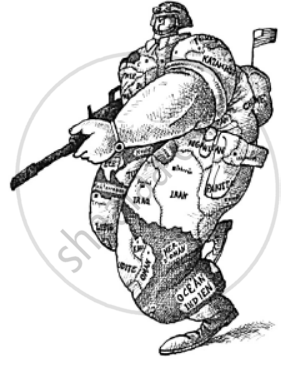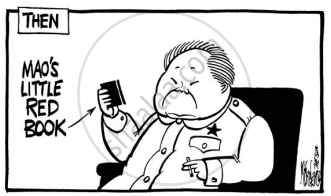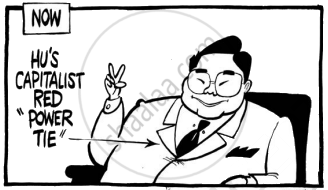Advertisements
Advertisements
In the midst of severe competition and many conflicts in 1989, a consensus appeared to have emerged among most parties. Explain any three points of consensus.
Concept: Political Conflicts Overlanguage
Why did the people of China not receive the benefits of the reforms when its economy had improved dramatically? Explain giving any two reasons.
Concept: The Rise of the Chinese Economy
Explain any four reasons for the dominance of the Congress Party in the first three general elections in India.
Concept: Nature of Congress Dominance at the National Level
Highlight any two major problems faced by the Election Commission of India for holding the first General Election in 1952.
Concept: Challenge of Building Democracy
Analysis of any two effects of the Emergency declared in 1975 on the politics of India.
Concept: Declaration of Emergency
Examine any six consequences of the disintegration of USSR.
Concept: Disintegration of the Soviet Union and Its Impact Or Consequences on the World Order
Which one of the following countries was NOT a part of the Soviet Union?
Concept: Why Did the Soviet Union Disintegrate?
“The ‘Arab Spring’ was the people’s revolution against injustice.” Support the statement with any two examples.
Concept: New Entities in World Politics: Russia, Balkan States and Central Asian States
On 19th March 2003, the US launched its invasion of Iraq the code name ______.
Concept: The Iraq Invasion
Study the given cartoon carefully and answer the questions that follow:

- The soldier shown in the cartoon belongs to which one of the following countries?
- USSR
- USA
- Iraq
- Iran
- In which year was Iraq attacked under the code name ‘Operation Iraqi Freedom'?
- 1993
- 2000
- 2003
- 2008
- Which one of the following countries shown on the cartoon is a ‘Gulf country’?
- Iran
- Kazakhstan
- Pakistan
- Oman
- The First Gulf War is also known as ______.
- Smart War
- Operation Liberation
- Computer War
- Operation Enduring Freedom
Concept: The Iraq Invasion
The objective of ASEAN is not restricted only to accelerating economic growth. Explain the statement.
Concept: Association of South East Asian Nations (ASEAN)
Evaluate any three steps taken by the Chinese leadership for the growth of Chinese economy.
Concept: The Rise of the Chinese Economy
Study the given cartoon carefully and answer the questions that follow:
 |
 |
- To which country are these two cartoons related?
- Japan
- Vietnam
- South Korea
- China
- Red Book is related to which ideology?
- Capitalism
- Communism
- Humanism
- Terrorism
- What does the 'Red Power Tie' depict?
- Negation of communism
- Acceptance of Capitalism
- Coordination of communism with Capitalism
- Negation of Capitalism
- What is the difference between 'then' and 'now' as per the cartoon?
- 'Rigidity' has increased now in the ideology of 'then'.
- Rigidity has decreased 'now' in the ideology of 'then'.
- The leader under 'then' and the leader under 'now' belong to different political parties.
- The leader under 'then' and the leader under 'now' belong to different organisations.
Concept: The Rise of the Chinese Economy
Name any four countries that are included in South Asia.
Concept: What is South Asia?
Highlight the speciality of India-Nepal relations.
Concept: India's Relations with Its Neighbours
Analyse any three major happenings in Bangladesh that show peoples’ support to democracy.
Concept: Democracy in Bangladesh
Assertion (A): During constitutional monarchy in 1990s, the political parties and the common people of Nepal wanted to have a more open and responsive system of government.
Reason (R): The King with the help of the army retained full control over the government and restricted the expansion of democracy in Nepal.
Concept: Monarchy and Democracy in Nepal
Which one of the following statements about relations between India and Nepal is NOT correct?
Concept: India's Relations with Its Neighbours
Suggest any two measures to improve the relations between India and Pakistan.
Concept: Peace and Cooperation
"The South Asian experience of democracy has expanded the global imagination of democracy.” Justify the statement.
Concept: What is South Asia?
